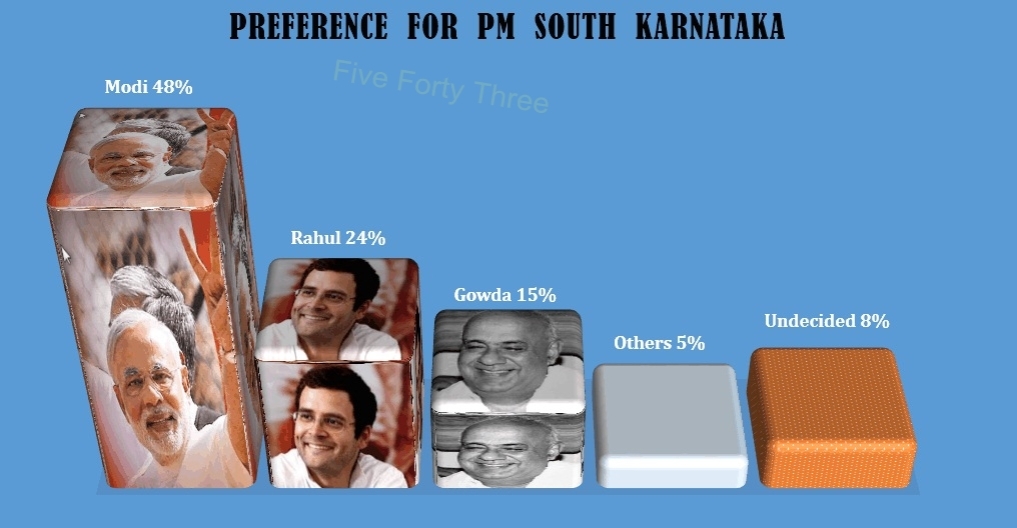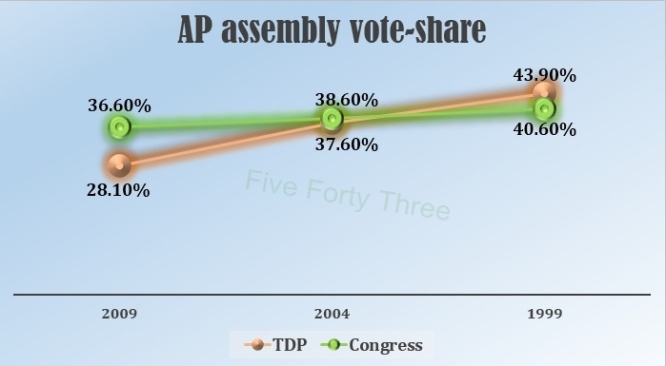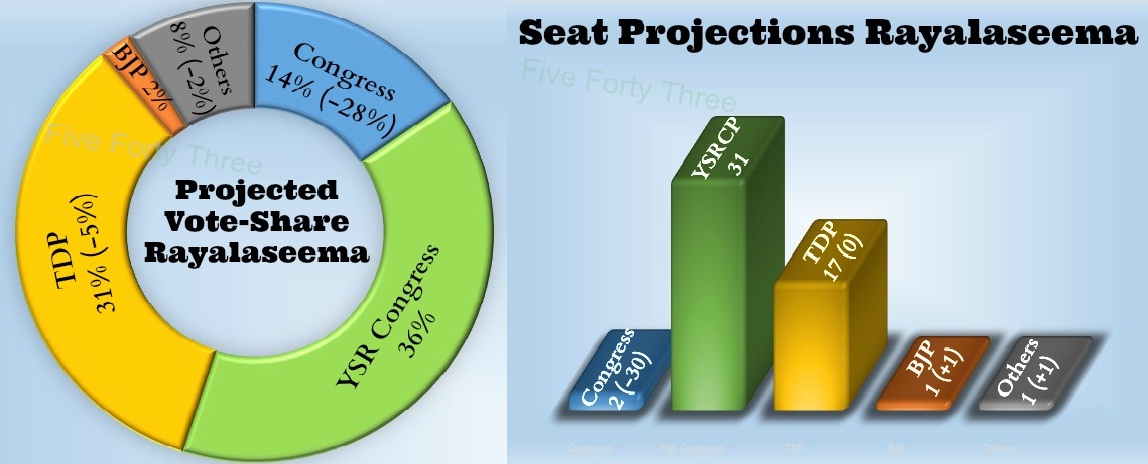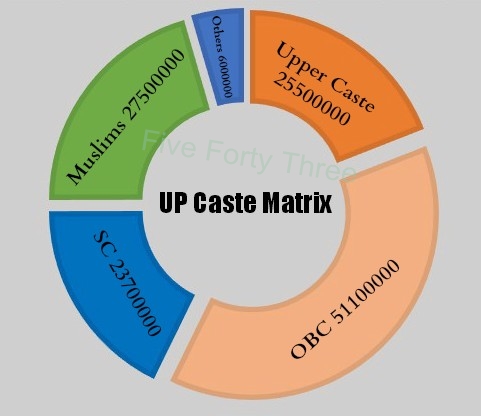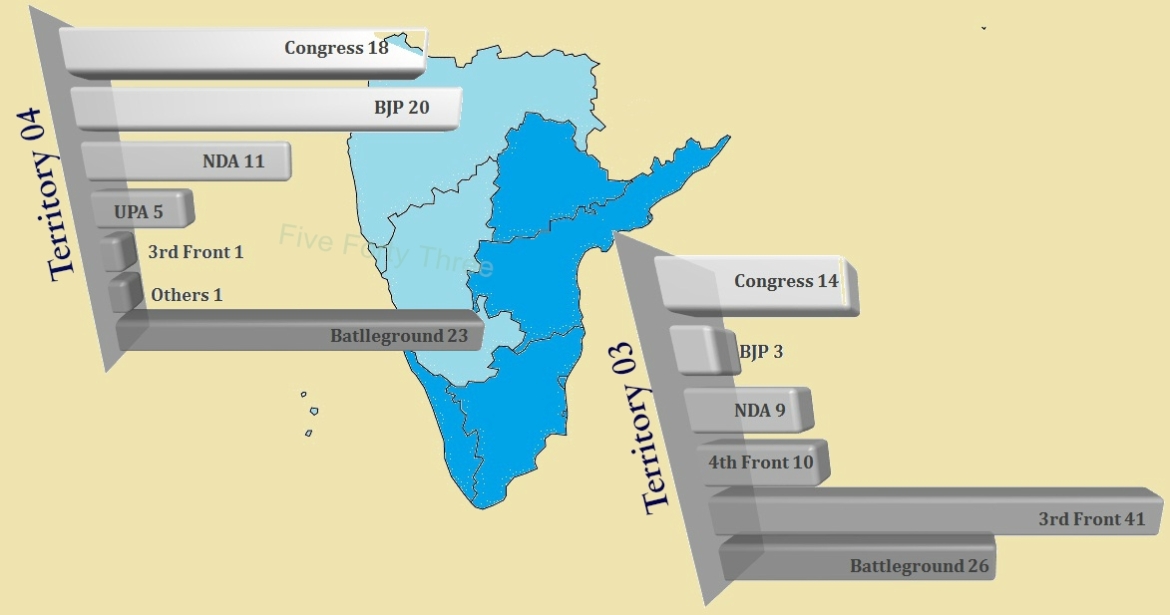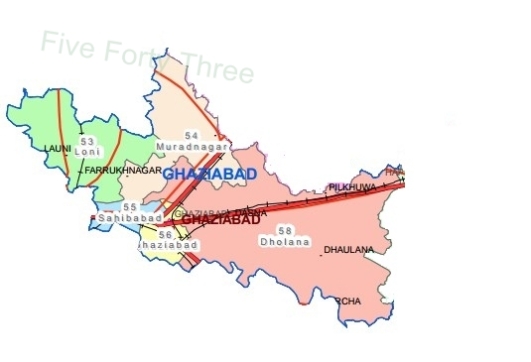“This is almost a government of Mysore state, we, the people of north Karnataka, have zero investment in this government” explains Madhav Rao, a retired school teacher and an eminent sociologist of Hubli, who is widely described as a ‘Kuruba by birth, a Kshatriya by vocation and a Brahmin by intellect’. “…Our vote for Congress was a reluctant one, because the previous governments (of BJP & JDS-BJP alliance) were too busy sorting their ego battles” Prof. Rao continues, “but this government has shown glorious inability to provide even basic decency of day-to-day governance in just 6 months”.
We are living in strange times, people’s expectations from their rulers are quite high and most political parties are yet to come to terms with these new realities. This governance gap has led to considerable shrinking of the “honeymoon period” that incumbent governments of a bygone era enjoyed for at least the first 2 years. The information overload created by deeper penetration of mobile phones and televisions has created a new “perennially angry class of voters with hyper-expectations” (as described brilliantly by an eminent Congress leader). Uttar Pradesh was probably one of the first states that scuttled the political honeymoon of the ruling government under one year after electing Akhilesh Yadav in early 2012. Karnataka is inching towards anti-incumbency at a much faster pace, but it is more pronounced in northern parts of the state than South because of Siddramaiah’s overt concentration on Old Mysore region.
Mallikarjun Kharge, the union railway minister and the tallest standing Dalit leader of Karnataka, was recently confronted by hundreds of Muslim youth in his home constituency of Gulbarga, asking him why development works of the state government (especially, road construction) had come to a standstill after the Congress government had come to power. He then famously made that statement of “oopar se Sherwani, undar se pareshani” to describe how the state Congress government is all gloss from outside but never listens to its leaders woes (from north Karnataka). This statement, more than anything else, describes the state of the Congress party and the government in the state.
A few months ago, opinion poll surveys conducted in the state, conventional political wisdom, anecdotal evidence, were all pointing towards a massive 20+ seat haul by the Congress party in Karnataka. Now things seem to be changing fast, and the return of B.S Yeddyurappa to the BJP fold has only added fuel to the fire of change. It is in this background that we set out to conduct our first major opinion poll survey spread across 26 districts and 25 parliamentary constituencies of Karnataka from the 11th of January to 22nd January. Our poll had a targeted sample size of 12000 respondents with adequate representation for all the different social groups/castes and we achieved an actual sample size of 9468.
This, possibly one of the largest sample surveys conducted in the state, was a mixed-mode survey wherein we not only conducted face-to-face interviews (55%) of the targeted respondents by visiting their homes but also conducted a telephone survey (45%). This was also a mixed-level survey, one of the first of its kind to be published in public domain, wherein survey was conducted not only to get an overall vote-share picture of the state but also to get the real picture of each individual MP seat as the target sample was not less than 400 in each individual parliamentary constituency. We also used two revolutionary new methodologies; RSSI and VWISM; to conduct this survey which we believe gives us near 100% accuracy in gauging voter preferences.
This is also the first time in India at least, if not the world over, that we are pioneering what we have termed as OSOP – Open Source Opinion Poll. Poll surveys in India are almost an occult craft as most of them employ black-box techniques which do not withstand any public scrutiny and are simply accepted on the basis of the “reputation” of the company. This ad-hoc approach to election analysis has created many armchair psephologists who give out seat projections at the drop of the hat, especially in the era of social media when even vote-shares are projected by Tweeple every day with terrifying confidence. In a market oversaturated with dubious pollsters, 5Forty3 has decided to restore the “Bharosa” in polling by creating an open source model wherein not only methodologies and techniques are put into the public domain, but also raw data is shared openly for the first time! (for a detailed OSOP Karnataka methodology and data, click here, OSOP )
Karnataka, a state of contradictions
The primary message that the Karnataka voter seems to be conveying is one of confusion, for her anger at the central government is palpably high, but her alternative in the state has also betrayed her. Karnataka has tremendous hope (like India on the whole) about Modi, but is not sure if she can trust his local guardians. The vote of last summer was of desperate frustration, make no mistake about it, and the unintended beneficiary of that vote was Congress, a party that the voter is still unsure of. The state government is already inching towards big anti-incumbency, due its non-governance.
 Only 51% of the voters give a positive rating for the state government, although Siddramaiah still is the number one choice to lead the state (a typical ruling CM bias). What is significant is that only 18% of the voters think of this government as “good”, while a major chunk of 33% voters think it is just about “ok”. Usually a pro-incumbency mood in a state sets in when the rating of a state government is in the 60’s; for instance, in Madhya Pradesh, last November, 74% of the voters had a positive rating for the government and Shivraj Singh Chouhan won a massive mandate, whereas in Rajasthan the voter rating for the state government was in the mid-50s and the ruling party suffered a colossal defeat.
Only 51% of the voters give a positive rating for the state government, although Siddramaiah still is the number one choice to lead the state (a typical ruling CM bias). What is significant is that only 18% of the voters think of this government as “good”, while a major chunk of 33% voters think it is just about “ok”. Usually a pro-incumbency mood in a state sets in when the rating of a state government is in the 60’s; for instance, in Madhya Pradesh, last November, 74% of the voters had a positive rating for the government and Shivraj Singh Chouhan won a massive mandate, whereas in Rajasthan the voter rating for the state government was in the mid-50s and the ruling party suffered a colossal defeat.
 When asked to compare, voters still give the present government a slightly higher rating than the previous BJP government, as 42% of the voters prefer the present government over the previous government, while 37% feel the previous government was better.
When asked to compare, voters still give the present government a slightly higher rating than the previous BJP government, as 42% of the voters prefer the present government over the previous government, while 37% feel the previous government was better.
 B.S Yeddyurappa is still the second most popular leader in the state and is way ahead of the rest of the pack. His popularity is much higher in Mumbai Karnataka and coastal regions than in the southern parts of the state. There is a significant section of the people (27%) who believe BJP shouldn’t have taken back the former CM into the party fold, but almost 68% of BJP voters believe it was the right decision to re-induct BSY into the party fold. What is even more significant is that 74% of the Lingayat voters are happy that BSY is back in the BJP. Even more SC voters seem to be positive about the development than negative (good – 24%, bad – 21%, neutral – 14% & don’t know – 14%). Thus Yeddyurappa’s return may be beneficial to the BJP as its core-voters seem to have reacted positively.
B.S Yeddyurappa is still the second most popular leader in the state and is way ahead of the rest of the pack. His popularity is much higher in Mumbai Karnataka and coastal regions than in the southern parts of the state. There is a significant section of the people (27%) who believe BJP shouldn’t have taken back the former CM into the party fold, but almost 68% of BJP voters believe it was the right decision to re-induct BSY into the party fold. What is even more significant is that 74% of the Lingayat voters are happy that BSY is back in the BJP. Even more SC voters seem to be positive about the development than negative (good – 24%, bad – 21%, neutral – 14% & don’t know – 14%). Thus Yeddyurappa’s return may be beneficial to the BJP as its core-voters seem to have reacted positively.
 Inflation and gainful Employment are the two big issues that the mature Karnataka voters are picking as their problem areas. Here, significantly, 37% voters feel BJP is best suited to provide jobs, while only 25% vote for Congress on this. Similarly 34% voters think BJP is best suited to handle inflation, while 30% think Congress is adept at it. A whopping 59% hold central government responsible for inflation. On the corruption issue, both BJP and Congress are seen to be equally corrupt at 35% and 33% respectively (the recent induction of tainted ministers in the Siddramaiah cabinet has not gone down well among the voters).
Inflation and gainful Employment are the two big issues that the mature Karnataka voters are picking as their problem areas. Here, significantly, 37% voters feel BJP is best suited to provide jobs, while only 25% vote for Congress on this. Similarly 34% voters think BJP is best suited to handle inflation, while 30% think Congress is adept at it. A whopping 59% hold central government responsible for inflation. On the corruption issue, both BJP and Congress are seen to be equally corrupt at 35% and 33% respectively (the recent induction of tainted ministers in the Siddramaiah cabinet has not gone down well among the voters).
 All of this state-level information may not be of much use to us in determining the upcoming elections as what matters is the national government. The Karnataka voter has always had the maturity to distinguish between the state election and the national election, so the one statistic that matters is this – a whopping 74% of the voters in the state have a negative perception of the Congress led central government. What is even more stunning is that 40% of the voters believe this is the worst government in living memory and only a paltry 9% of the voters think the UPA government can be termed as “good”. Such levels of anti-incumbency against the central government are unheard of in the southern states since independence – even in the post-emergency JP election of 1977, such a mood wasn’t seen in the state. Yet, despite such an overwhelming antagonism for the central government, the voter is not punishing the Congress as vehemently as one would have expected, and thereby lies the sorry tale of the main opposition party, the BJP, in the state.
All of this state-level information may not be of much use to us in determining the upcoming elections as what matters is the national government. The Karnataka voter has always had the maturity to distinguish between the state election and the national election, so the one statistic that matters is this – a whopping 74% of the voters in the state have a negative perception of the Congress led central government. What is even more stunning is that 40% of the voters believe this is the worst government in living memory and only a paltry 9% of the voters think the UPA government can be termed as “good”. Such levels of anti-incumbency against the central government are unheard of in the southern states since independence – even in the post-emergency JP election of 1977, such a mood wasn’t seen in the state. Yet, despite such an overwhelming antagonism for the central government, the voter is not punishing the Congress as vehemently as one would have expected, and thereby lies the sorry tale of the main opposition party, the BJP, in the state.
Region 1: North-Central Karnataka – The Lingayat Heartland
The five districts of Hyderabad-Karnataka, 3 districts of Central-Karnataka and five districts of Mumbai-Karnataka make up this region of North-Central Karnataka. The 2009 super-show of BJP in Karnataka (the state that gave the largest chunk of saffron MPs) was powered by this region as the party had won a whopping 11 of the 13 MP seats on offer in this region. BJP had literally swept Mumbai-Karnataka and Central-Karnataka sub-divisions by winning every parliamentary constituency. It is no coincidence that BJP’s biggest rise came from this region which also happens to be the Lingayat heartland. Since the last year, Congress is on a revival path here.
 The fact that BJP is now neck and neck with Congress in this region is testimony to the party’s recovery after the humiliating defeat of just 8 months ago. Yet, since this is the region where BJP has to win most of the LS seats, the current recovery is not enough, especially considering the huge popularity that Modi enjoys in this region. It is the same old story of local-level failures tying down the party in an otherwise favorable atmosphere. Congress, on the other hand would also be worried, for its overt concentration of power in the hands of CM Siddramaiah is not going down well with many powerful north-Karnataka leaders of the party. There is a strong Lingayat lobby within the Congress party which is getting increasingly restless and is not averse to teaching the party leadership a lesson or two in the upcoming Lok Sabha polls. As always, JDS is getting wiped out of the electoral landscape in the national elections.
The fact that BJP is now neck and neck with Congress in this region is testimony to the party’s recovery after the humiliating defeat of just 8 months ago. Yet, since this is the region where BJP has to win most of the LS seats, the current recovery is not enough, especially considering the huge popularity that Modi enjoys in this region. It is the same old story of local-level failures tying down the party in an otherwise favorable atmosphere. Congress, on the other hand would also be worried, for its overt concentration of power in the hands of CM Siddramaiah is not going down well with many powerful north-Karnataka leaders of the party. There is a strong Lingayat lobby within the Congress party which is getting increasingly restless and is not averse to teaching the party leadership a lesson or two in the upcoming Lok Sabha polls. As always, JDS is getting wiped out of the electoral landscape in the national elections.
- Congress party seems to be off its peak in this region of the state and is now sliding with each passing week, unless it takes drastic steps the party may have a surprisingly poor show here
- Apart from union railway minister, Mallikarjun Kharge, in Gulbarga (where he is leading by a huge margin), none of the other seats in this region can be termed as safe seats for the Congress which had a good showing in the assembly elections just a few months ago; for instance, even former CM, Dharam Singh, seems to be suffering from huge anti-incumbency in Bidar
- Sriramulu, the former health minister, still has reasonable influence in at least 3 parliamentary seats – Bellary, Raichur and to some extent Haveri – and he may be the crucial differentiating factor between victory and defeat in these LS seats
- The worrying signs for the BJP are in the form of voter’s antipathy towards sitting MPs who are facing a great deal of anti-incumbency and need to be replaced wholesale (even in the safe seats of Belgaum, Dharwad etc.)
- BJP needs to woo back large sections of SC (left wing) voters in this region who had abandoned the party in the assembly elections, but have otherwise been with the party for more than a decade now
- AAP has zero influence in Hyderabad-Karnataka or Central-Karnataka, but voices in favor of the new party where heard in parts of Mumbai-Karnataka, especially in the big cities of the region like Hubli, for ex, where BJP sitting MPs have become very unpopular
- Even state unit president, Prahlad Joshi is facing an uphill task
South Karnataka – Cosmopolitan Vokkaliga territory
This is the combination of BKT region and Old Mysore region wherein Gowdas have reasonable influence as a dominant caste. There are 11 seats in this region and Bangalore itself is home to 4 parliamentary seats; of these 11 seats, Congress and BJP had won 4 seats each, while JDS had won 3, thus showing a 3-way split. This time, in the old-Mysore region, the contest is directly between Congress and JDS with BJP virtually absent. BJP’s presence is almost totally limited to Bangalore and Tumkur as of now.
 Our projected vote-share of the region suggests a big gap of 7% between Congress and BJP, although it is much lower when only BKT region is taken into consideration. This is a very important region for the Congress party as it has all its power concentrated in this region and anything less than a sweep would be hugely counterproductive for the party – the CM and most of his top cabinet colleagues along with the state unit president belong to this region, apart from two powerful union ministers of the state (Veerappa Moily and K.H. Muniyappa). Even the other power centre of the state Congress, former external affairs minister, S.M. Krishna, belongs to this region. It was also in this region that Congress won the two by-elections late last year for two prestigious MP seats which had been JDS strongholds in the recent past. There are also strong rumours that Rahul Gandhi would be contesting from this region as a safe bet in the wake of a difficult time in Uttar Pradesh.
Our projected vote-share of the region suggests a big gap of 7% between Congress and BJP, although it is much lower when only BKT region is taken into consideration. This is a very important region for the Congress party as it has all its power concentrated in this region and anything less than a sweep would be hugely counterproductive for the party – the CM and most of his top cabinet colleagues along with the state unit president belong to this region, apart from two powerful union ministers of the state (Veerappa Moily and K.H. Muniyappa). Even the other power centre of the state Congress, former external affairs minister, S.M. Krishna, belongs to this region. It was also in this region that Congress won the two by-elections late last year for two prestigious MP seats which had been JDS strongholds in the recent past. There are also strong rumours that Rahul Gandhi would be contesting from this region as a safe bet in the wake of a difficult time in Uttar Pradesh.
- JDS seems to be in a big decline in this erstwhile stronghold and Devegowda also has lost a great deal of his charisma and is a distant third in the popularity ratings for the PM race.
- The 2014 election could well decide the future of the JDS as a party, for it may even be reduced to a solitary parliamentary seat this time around (that of family stronghold, Hassan)
- In the three urban seats of Bangalore, BJP still has a great deal of popularity due to its prime-ministerial candidate and has a decent chance of repeating the 2009 showing
- Surprisingly, BJP has a decent lead in Bangalore south, which goes contrary to conventional wisdom of the social media; more than 60% of the respondents of this constituency haven’t heard of Nandan Nilekani and Anant Kumar is still a well-known face.
- Apart from Bangalore, Tumkur is one seat where BJP still has an edge over others, but everything depends on how BSY manages this seat (there are rumours that he may himself contest from this seat, which could make this a one-sided contest as a big 61% of the respondents were in favor of this)
- Apart from Bangalore, Tumkur and Hassan, it is virtually a one-horse race in the other 6 LS seats where Congress has a big lead although K.H. Muniyappa seems to be suffering some pockets of resistance, but has no credible opposition leader to challenge him
- In Mandya, the starlet Ramya, seems to be enjoying huge popularity and may win by an even bigger margin in the 2014 election
- AAP has limited presence in Bangalore and may only become a spoiler only if strong candidates get tickets from the party
Coastal Karnataka – The ideological battlefield
 The 5 districts of Coastal Karnataka are currently in the midst of a Modi wave and BJP, which had won all the 4 parliamentary seats in this region, may well repeat the 2009 performance. The return of Yeddyurappa has also made things relatively easier for the BJP. Congress, which had a historic opportunity to put down BJP in this region after an unexpected windfall gain in last year’s assembly elections seems to have squandered that opportunity. Coastal-Karnataka is the original BJP bastion where the party had first found its foothold during the RJB movement; in fact, the Sangh has been a force here from an even earlier period of the Jan Sangh days. This is one area that is similar to other BJP strongholds like Gujarat and Madhya Pradesh where a strong BJP ecosystem exists.
The 5 districts of Coastal Karnataka are currently in the midst of a Modi wave and BJP, which had won all the 4 parliamentary seats in this region, may well repeat the 2009 performance. The return of Yeddyurappa has also made things relatively easier for the BJP. Congress, which had a historic opportunity to put down BJP in this region after an unexpected windfall gain in last year’s assembly elections seems to have squandered that opportunity. Coastal-Karnataka is the original BJP bastion where the party had first found its foothold during the RJB movement; in fact, the Sangh has been a force here from an even earlier period of the Jan Sangh days. This is one area that is similar to other BJP strongholds like Gujarat and Madhya Pradesh where a strong BJP ecosystem exists.
..
- The contest here is directly between Congress and BJP, which is also essentially a contest of Hindus v/s minorities for all practical purposes
- As we have seen in the last few weeks, in any direct contest between Congress and BJP, the former has a huge disadvantage (MP, Rajasthan etc. where Congress was decimated) and the later almost always emerges victorious – this is what is likely to happen in coastal Karnataka too
- Congress doesn’t even have a credible candidate in at least 2 of the 4 LS seats to take on the BJP juggernaut, so much so that BJP might get a virtual walkover in Shimoga where Yeddyurappa or his son may contest
- Mangalore is literally divided into two halves of Hindus and non-Hindus, almost reminiscent of Uttar Pradesh like polarization along religious lines, which will hurt the Congress party
- The backward caste voters of this region are flocking towards BJP in a big way
- JDS is once again just a namesake player here and AAP is non-existent
The PM contest and NaMo’s popularity
 Narendra Modi’s popularity in the state is unprecedented. Not even powerful state leaders of the past have had such high ratings; for instance, even when Veerendra Patil won a massive mandate in 1989, his popularity in the state was in the range of 43% to 49% at its peak as per polls of that era. Today, Narendra Modi’s popularity in the state is at about 55%, which is unprecedented to say the least. Among the largest caste of the state, the Lingayats, Modi is the only non-Lingayat (apart from Ramakrishna Hegde) who has enjoyed popularity rating of 70% and above. What is surprising is that even among Kurubas, a caste to which Siddramaiah belongs, Modi is the number one choice to lead India after 2014. The only community where Modi’s popularity is abysmally low is among Muslims.
Narendra Modi’s popularity in the state is unprecedented. Not even powerful state leaders of the past have had such high ratings; for instance, even when Veerendra Patil won a massive mandate in 1989, his popularity in the state was in the range of 43% to 49% at its peak as per polls of that era. Today, Narendra Modi’s popularity in the state is at about 55%, which is unprecedented to say the least. Among the largest caste of the state, the Lingayats, Modi is the only non-Lingayat (apart from Ramakrishna Hegde) who has enjoyed popularity rating of 70% and above. What is surprising is that even among Kurubas, a caste to which Siddramaiah belongs, Modi is the number one choice to lead India after 2014. The only community where Modi’s popularity is abysmally low is among Muslims.
In Karnataka too, the Modi vote is the broad spectrum of Hindu vote just like his heartland experiment. Here, the Lingayats have replaced the OBCs as the core of that united Hindu vote, which has now been augmented with the arrival of B.S. Yeddyurappa, the tallest Lingayat leader in the state. Another feature of the popularity of the Modi Vote is his huge credibility in tier-2 cities and small towns; for instance, Modi maintains a big 15% lead over his nearest rival in a whopping 24 district headquarters of the 26 surveyed (barring Mandya and Gulbarga).
Almost 87% of the voters recognize/recall Modi which is a very high number, considering that less than 70% of the Kannadiga people recognized either Manmohan Singh or L.K. Advani in the run-up to the 2009 LS elections as per two different opinion polls of that time. A few respondents in the interiors of the state do recall Modi, but are not sure which party he belongs to, which is a problem that BJP has to address as soon as possible. Here is a funny statistic; about 3% of the rural Muslim respondents (especially women), believe Modi is a Muslim, because they have possibly heard that name in some religious context! (Is it possible that Modi, the name, has secular connotations to it?)
Despite such huge popularity ratings of its prime-ministerial candidate, BJP is still the second choice of the voters in the state, and that is a story in itself. It is amazing that 3 out of 10 voters who want Modi as the next PM of India are not voting for the BJP! The BJP’s woes at the local level are far too many and Modi’s popularity alone cannot sweep all of them under the carpet. For instance, the party cadre are absolutely distraught that the party is not making an issue of the blatantly communal agenda of the Congress government in the state, this anger of the cadre against the leadership is seen to be believed in Northern Karnataka. Modi himself had a great opportunity to raise the issue of the blatantly communal Shadi Bhagya in his Bangalore speech recently, but he simply chose to ignore that (his Karnataka advisors must be held answerable for this major gaffe).
One way to tackle the local problems of the BJP is to not give tickets to at least 60% (if not more) of the sitting MPs of the party and giving some tickets to newcomers and professionals, at least in bigger cities and more urbanized constituencies. Will BJP leadership show the courage to implement the Yeddyurappa plan (of wholesale ticket rejection)? Or will the Delhi-clique be able to wield its power and retain old-timers as contestants? The answer to these two questions will also be the answer to how many seats the party will win in the state.
For the Congress party, the less it involves the central leadership, the better would be the result. It is indeed a challenge for the Congress to convert a national election into a local one, just like it was an insurmountable challenge for the BJP to convert an essentially local election into a national one in May 2013. The one big issue that Congress leadership has to solve is to create checks and balances against Sidhramaiah’s power which has reduced all other Congress leaders to irrelevance (especially in North Karnataka). A weakened high command has created many orphans among Congress leaders who are feeling utter helplessness in a state that is being controlled by CM’s cronies.
A note on undecided voters
 Since May 2013, there has been a 11% +ve swing in favour of the BJP, which has mostly come from the fragmented vote of “others” who have ceased to exist after the assembly elections (KJP has merged with the parent party). This is also a typical national election imbalance wherein the two national parties get the maximum vote and the other smaller parties tend to underperform. What is significant is that Congress is also losing a bit of its vote-share even in the honeymoon period, which underlines the antagonism for the Congress party in the national elections and the lackluster performance of the state government.
Since May 2013, there has been a 11% +ve swing in favour of the BJP, which has mostly come from the fragmented vote of “others” who have ceased to exist after the assembly elections (KJP has merged with the parent party). This is also a typical national election imbalance wherein the two national parties get the maximum vote and the other smaller parties tend to underperform. What is significant is that Congress is also losing a bit of its vote-share even in the honeymoon period, which underlines the antagonism for the Congress party in the national elections and the lackluster performance of the state government.
There are an unusually large 10% undecided voters in the state which tells us that people are still assessing the ground situation and any party that makes the right moves in terms of good candidate selection may walk away with the advantage. Here, BJP enjoys a fair bit of advantage due to the popularity of its PM candidate, for almost 42% of the fence-sitter, undecided voters prefer Modi as their PM choice, while less than 9% of the same voters have Rahul Gandhi as their choice (about 30% of the undecided voters are also unsure about the PM candidate). BJP has to take advantage of this momentum that is with the party, whereas Congress has an uphill task of arresting its decline.
Seat Projections
Most poll surveys get their vote-shares right, but make huge errors in seat conversions because of the inherently complex arithmetic involved in deciding the Indian elections. Since this is a mixed level poll survey, wherein each MP constituency has been surveyed individually with a target sample of 400+ and a sample size of not less than 300 (for each constituency), the seat projections are based on a much more robust deeper level survey and not just by converting vote-shares.
 Of these 28 LS seats, 9 are in the vulnerable category – 3 in the “close contest range” and 6 in the “very close contest range”. Of the 9 vulnerable LS seats, Congress is ahead in 5, BJP in 3 and JDS in 1. Since the fence sitters decide who will win these 9 vulnerable seats, we can term the ranges as follows – Congress (9 to 18), BJP (9 to 18) and JDS (1 to 4). Thus both BJP and Congress are unlikely to win less than 9 seats and more than 18 seats, unless there is a major shift of votes from one party to the other, apart from the undecided voters. Once again, it is clear that the momentum is with the opposition BJP as the Congress party, which was ahead in more than 20 seats just a few months ago is declining with each passing week.
Of these 28 LS seats, 9 are in the vulnerable category – 3 in the “close contest range” and 6 in the “very close contest range”. Of the 9 vulnerable LS seats, Congress is ahead in 5, BJP in 3 and JDS in 1. Since the fence sitters decide who will win these 9 vulnerable seats, we can term the ranges as follows – Congress (9 to 18), BJP (9 to 18) and JDS (1 to 4). Thus both BJP and Congress are unlikely to win less than 9 seats and more than 18 seats, unless there is a major shift of votes from one party to the other, apart from the undecided voters. Once again, it is clear that the momentum is with the opposition BJP as the Congress party, which was ahead in more than 20 seats just a few months ago is declining with each passing week.
Typically, the next survey in the state, much closer to polls and with candidates decided, would give us a clear picture of what would be the final Karnataka takeaway. A second poll survey would also give us the swing from January to Election Day and all the other resultant changes.
If you have liked this Karnataka analysis, please do take a few seconds and answer the three following questions of our poll


